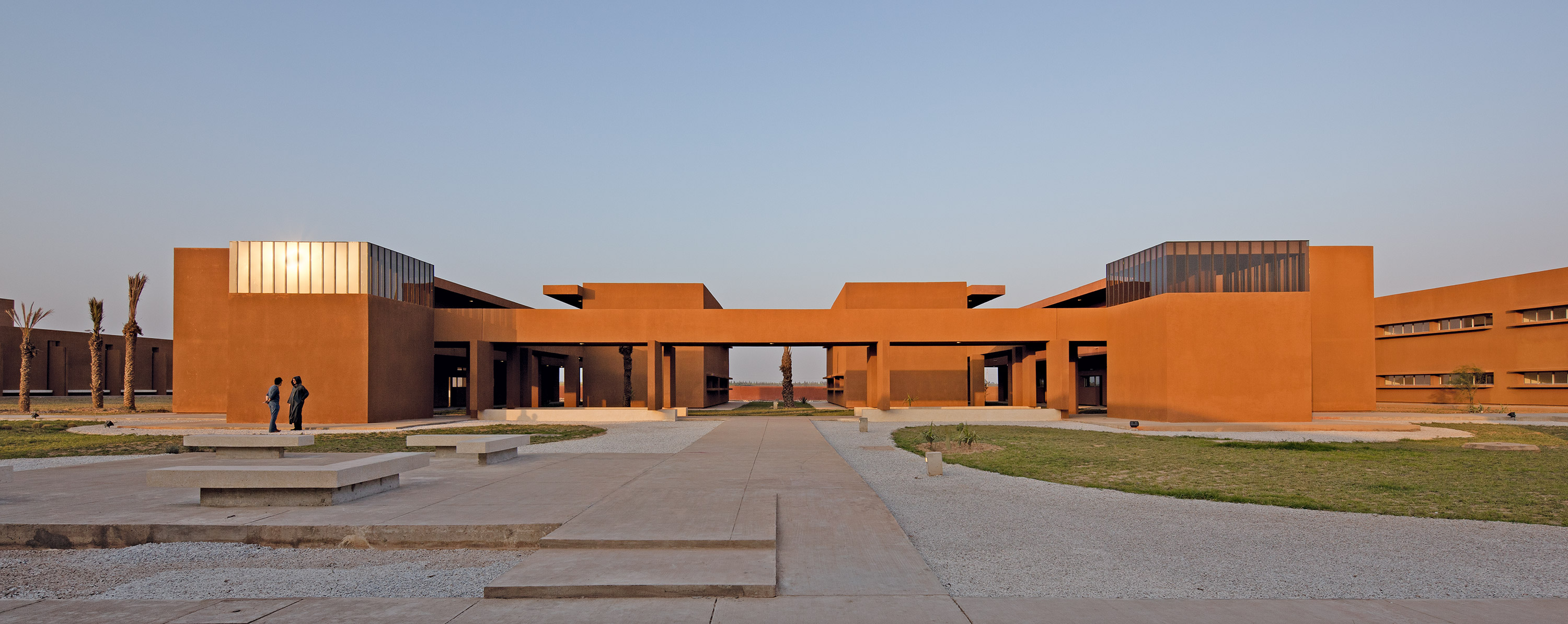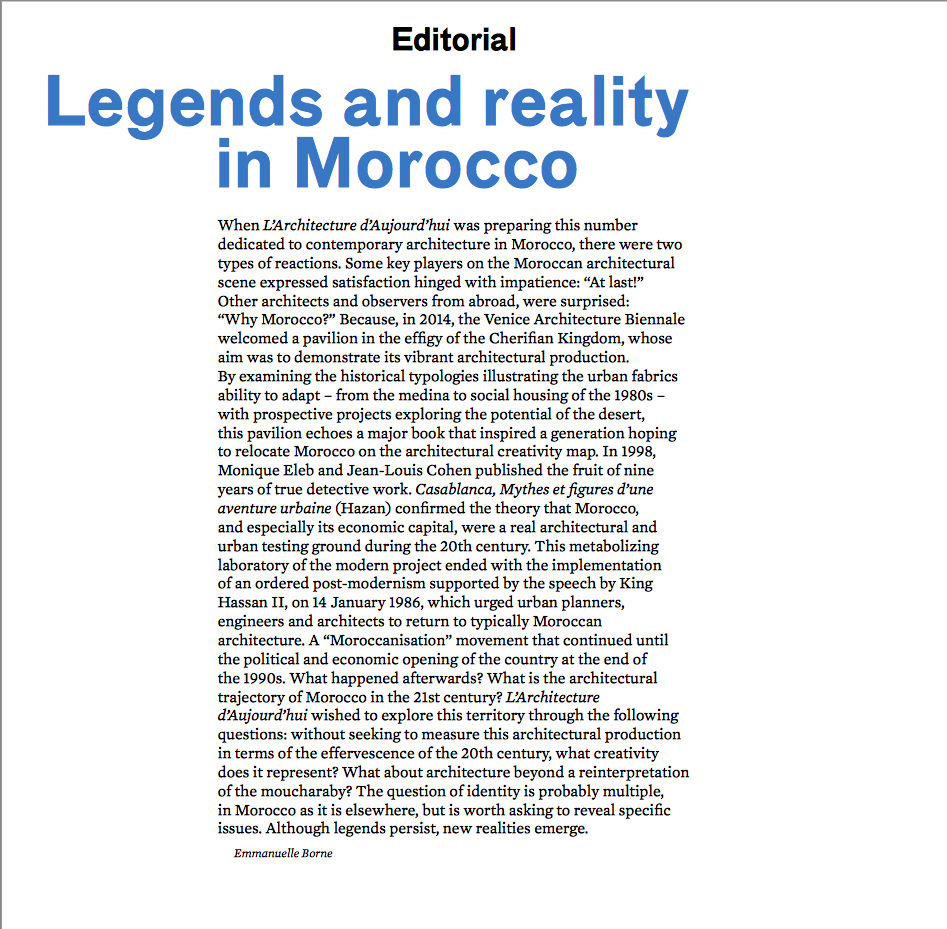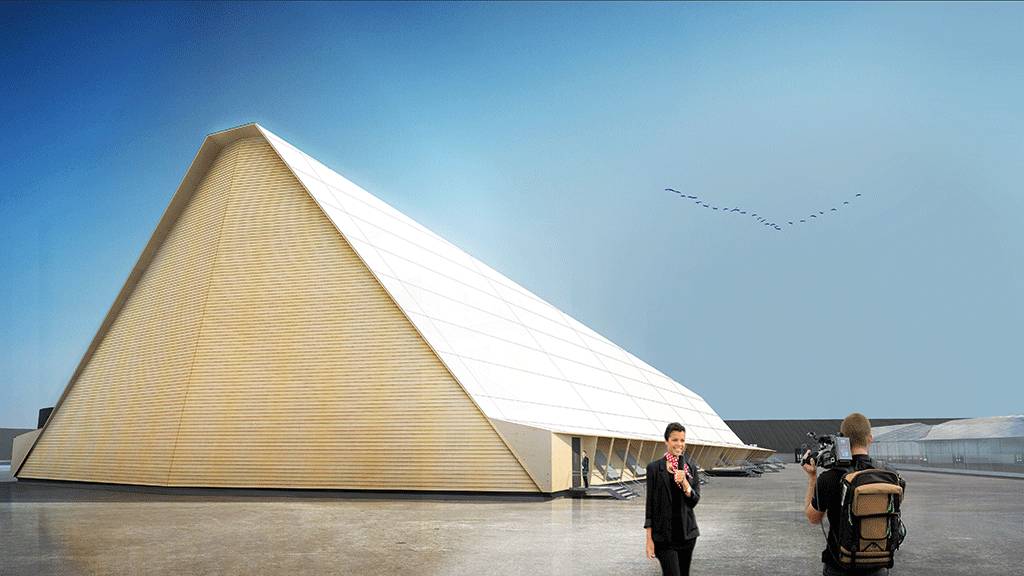Architecture is an Act of Resistance and Negotiation
Founded in 2001 by Linna Choi and Tarik Oualalou, based in Paris, with projects in Morocco, architecture practice Oualalou+Choi evolves outside the usual boxes and offers a decompartmentalized vision of architecture. The following interview, written by Andrew Ayers and published in the AA special issue No 46, invites you to meet these two strong architectural and urban thinkers.
L’Architecture d’Aujourd’hui: In the presentation of your work here, you’ve adopted five headings familiarity, acclimatization, disappearance, nomadism, and transgression. Can we talk a little bit about what you mean by some of these terms?
Tarik Oualalou: Of those five, the one that’s perhaps most on our minds right now is nomadism, in the context of both September’s terrible earthquake in Morocco and the World Bank /IMF village we have inaugurated in Marrakech in October.
Linna Choi: Our client is the Moroccan government, which is hosting the event. Their original idea was to rent a hotel on a golf course outside Marrakech and add a couple of extra structures. As an alternative, we proposed building, for the same amount of money, a temporary village next to the historic centre alongside the old city wall.
TO: There are very few large sites like this in the middle of town. It’s the same 40 ha site where we built the COP22 village for the United Nations in 2016, so it’s already engrained in people’s minds as a place for these kinds of events.
LC: When we did the COP22, we started imagining what temporary urbanism could be like. Generations to come are going to see huge movements of population, climate stress, war, and so on. Up till now, few people have really taken up that issue. For this event, even more than for the COP, we’ve pushed the idea of reusability. For the COP, it was essentially about recycling materials. This time we’re constructing buildings that can move and mutate, that can be transferred to another site and reassembled differently.
AA: This seems to be something that each generation of architects dreams of. We’ve all seen American wooden houses on the back of trucks or 15th-century half-timbered cottages that move 200 feet because of road-widening.
TO: Yes. But what’s new is that we include the idea of community: it’s not just a house that can be moved, which everyone has already done, it’s the idea that whole communities can move. That means not only housing but also infrastructure, as well as the means to sustain yourself food-wise, so the land must be dimensioned for agriculture. We’re trying to explore the idea of nomadism as an actual possibility.
AA: Nomadism being a word that chimes with your long-held interest in deserts…
LC: Absolutely! All of this ties together. Because of the recent earthquake in Morocco, hundreds of schools must be rebuilt, and it has to happen within a year. So we’re working with the Moroccan authorities to produce prototypes before the end of this year. In addition, the reusable structures we’ve designed for the WB/IMF in Marrakech can be immediately deployed.
AA: How can infrastructure become nomadic?
TO: Firstly, for infrastructure to move it can’t be buried. Once you bury it, it becomes invisible, and you create a situation where people don’t manage it themselves. Until about 150 years ago, infrastructure was community managed. Take the Venetian campo, for instance: there’s one cistern in the middle,which gives the dimension for a group of families—if there are too many people, someone has to move away because there are not enough resources.
In the last 150 years, the authorities took over the building and management of infrastructure to guarantee public health and hygiene. This had two consequences: firstly infrastructure became invisible, meaning it’s no longer community managed, but also the relationship to the territory was taken away: when you turn on your faucet, you have no idea where your water is coming from. Today, obviously, you have to maintain a certain degree of control on the part of the authorities, but we believe you also need to let communities regain the possibility of managing infrastructure themselves.
When you manage infrastructure as a community, it becomes dimensioned for that particular group of people. We’re not talking so much about existing cities as the new ones that you have to build in places that have no existing infrastructure—in various places in Africa, for example. But existing cities do provide a counter-example. Take the 18 million living in Los Angeles: obviously the land doesn’t provide enough water, so it comes from other places. But there are water shortages in the surrounding regions now, which shows how politically problematic it can be when infrastructure travels hundreds of miles. And that’s within the same country.
Look at international gas pipelines and Russia and the war in Ukraine. You have entire countries making political decisions based on where the energy is coming from. If, instead, you only settle in places where you have enough resources to maintain the population, you avoid such problems, and, by making the infrastructure visible, you restore the relationship with the greater landscape—like with Venetian cisterns, Roman aqueducts, or Dutch windmills, utilitarian structures that defined the civilization’s relationship to the landscape and contributed to the organization of public space.
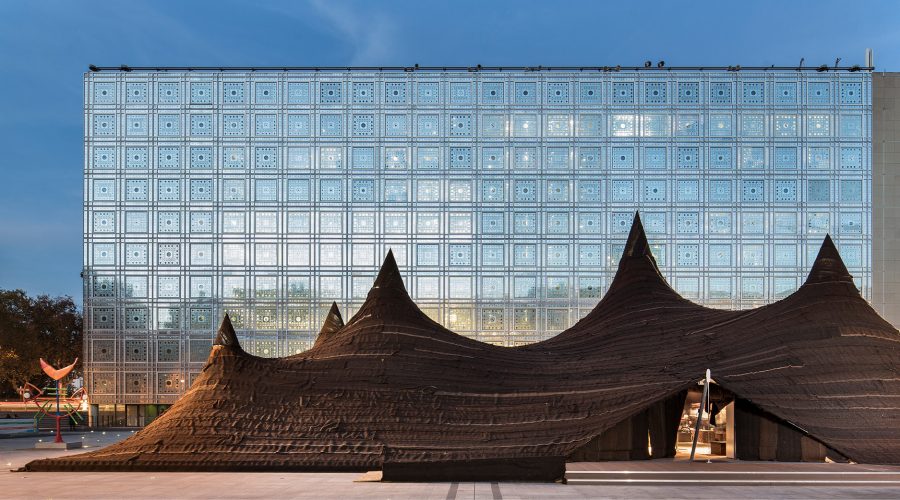
AA: This is making me think of another recent tragedy: the dams that collapsed at Derna in Libya.
LC: Yes. Nobody was looking after them, neither the authorities nor the community. Which is crazy for such a beautiful country—people don’t know this, but Libya is probably one of the most beautiful countries in the world. We’ve been lucky enough to spend a lot of time there: before the fall of Gadaffi, we spent four years on a project concerning a series of communities in the desert, 4,000 km from Tripoli. The country is huge—the territory in question, the Fezzan, is the size of France. It basically englobes the entire Libyan desert but has a population of just 250,000 people. And all of it is sitting on an aquifer, an enormous lake of fossil water. Non-renewable of course.
TO: But huge quantities—there’s so much water that Gadaffi built what he called a manmade river to bring the water from the desert to the coast. So the conundrum here, if you’re relying on that water, is that you have a series of settlements with a finite period of liveability, an expiration date, because the water will run out in 30 or 40 years. Working with IAURIF [Paris Region Institute, Ed.], we were asked to replan fifty communities for the people living there.
Our conclusion, after working onthis for many years, was that some settlements needed to disappear right away and go back to being desert, while themedium-sized settlements needed to be metropolized in order to provide greater possibilities to live there. This notion of an urbanism of disappearance—because urbanism as a discipline was invented to manage the growth of cities—means the discipline has to find ways of reversing its usual approach, of bringing nature back to places where humans once lived, while at the same time agglomerating at other strategic spots. For us, this extreme situation was a defining moment.
We’ve never thought cities in the same way since. Now, in our urban projects, we’re acutely aware of the need to achieve a balance between what you take away and what you give back to nature.
AA: In the context of the climate crisis, people are slowly waking up to the environmental violence inherent in the act of building.
TO: You know, I wrote my graduate thesis on the idea of architecture as a form of deterioration, the idea that architecture should never be taken lightly, because it’s an act of incredible violence that almost never makes the situation better than it was before. It doesn’t mean it’s not needed or necessary, but it’s rarely a form of betterment. And if you take that as a starting point, then first of all you have to refuse 90% of the jobs that you’re asked to do and/or find ways in which to do them completely differently. You have to open the box differently. The parameters of the project are not the same.
AA: How does that work out concretely?
TO: We’ve always approached every one of our projects in a very lateral or diagonal way. Each project is an intersection of a place, a group of people, and our obsessions of the moment. For us, the project is never limited to the brief. First of all, we’re not very interested in programme. Our generation was raised on a Dutch legacy of programme computations—Rem Koolhaas in particular—that critiqued Postmodernism by using programmatic needs as a way to define new forms of buildings.
Those strange-looking buildings based on these programme computations may look fascinating, but they are static figures.First because programme is generally the antithesis of use, since people never do what you tell them to do where you tell them to do it. Coming from the southern Mediterranean, I can vouch for this! People are not “disciplined,” and they shouldn’t be.
AA: You’re making me think of the photos you included in the Moroccan Pavilion at the 2014 Venice Architecture Biennale that show the Nid d’Abeille and Sémiramis housing blocks in Casablanca with all their loggias filled in…
TO: [laughs] Yes, that’s a typical example! They were built by AtBat-Afrique—Georges Candilis, Shadrach Woods, Vladimir Bodiansky and Henri Piot—and made it onto the cover of L’Architecture d’Aujourd’hui in 1954 after the CIAM. These are magnificent projects that have fascinated architects by their abstraction, by the disappearance of all modenature: no railings, no windows, no doors. They are pure presences, like a Mondrian painting.
LC: An architect’s dream!
TO: And the idea behind them is so beautiful, a typical architectural idea. Basically what AtBat did was to say, “Okay, the natives live in courtyard houses, so, in order to make them civilized, we’re going to make suspended courtyards.” So these hollows you saw on the façade, these loggias, were intended as suspended courtyards onto which each apartment gives. But all that the inhabitants really wanted is one more room, so they bricked the loggias and then put a window in it. And that’s beautiful!
What I love about Morocco is summed up in this project. On the one hand it constantly calls for radicality, which is what the project was about, but on the other hand there are always levels of appropriation and misappropriation that deserve close study, because people never do what you tell them to. So this question of programme is secondary to us.
Also because the building becomes still-born: it’s so incredibly determined that its capacity to transform is non-existent. The programme leaves no room for uncertainty. You look at Paris all the buildings in alignment are Haussmannian. Behind the façade it could be a hospital, housing, offices, a museum, you don’t know, because it’s not about that, a building shouldn’t always express what’s happening inside. I don’t know where we were taught this. Because what happens is that use changes. So a specific programme is never a specific programme.
AA: It’s interesting, in this context, that “familiarity” is one of the terms you use when talking about your work. What do you mean by that?
LC: Familiarity is a way of using certain architectural elements that rely on memory to create a relationship between the buildings and the people who live in them that doesn’t need to be explained. Architecture can be familiar in many different ways: materiality, touch, and smell are all very important, but also certain kinds of spaces, and how you move through them. We’re trying to move beyond an opposition between a Modernist tradition and archaic roots.
In a way, we think of our architecture as being very archaic, very naked, not afraid of using existing typologies, not necessarily wanting to consider that something that doesn’t exist is better than something that has already existed. We don’t have a problem putting ourselves within a tradition or a series of traditions. When we did the pavilion for Dubai, we used rammed earth, but the building’s form is extraordinarily strange. However, it’s organized around a courtyard, a familiar form.
Of course, the way you move around the courtyard is never-ending ramp, so it’s not a traditional relationship. But, this typology is a trigger of familiarity. The earth is a trigger of familiarity, as is the presence of wood. All put together, it’s a way of creating a relationship between what we do and how people live in architecture.
AA: And what about “acclimatization”, which seems to suggest the idea of something arriving where it isn’t supposed to be?
TO: That’s exactly what it is. It’s originally a botanical term. Both at home and in their colonies, the French made gardens where they brought plants from other latitudes to see what would adapt and survive and what wouldn’t. And we’re fascinated by how grafts of culture mutate and transform, how architectural ideas, when taken from one place to another, become a whole different set of meanings. Japan, Brazil, Morocco, all these places, they embraced Modern architecture and the graft took. We’re fascinated by the notion that ideas can be taken, transformed, adapted, modified, that they can genetically mutate. And acclimatization obviously has a geographical side to it—you have to heed the climate and the environment! What are the elements of architecture that can mutate, that can create a relationship to the ground and to the sky in the place that it happens?
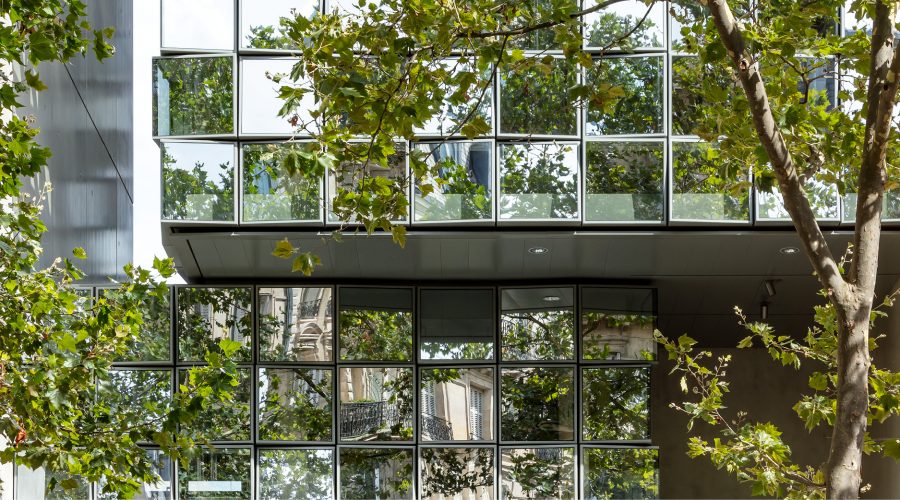
AA: As transplants from elsewhere, acclimatization is something that you’ve both had to do personally.
LC: Yes. We’re both products of that. It means something to us, because we find specificity in it.
AA: You also teach all over the world. How important is that to your practice?
LC: Extremely important. We use teaching as an accelerant, a way of crystallizing projects beyond merely speculative research. There are a lot of projects that we initiate ourselves, and teaching is a way for us to test the ground. University serves as a place of incredible experimentation. We often have our students work on real projects. The way we do architecture is maybe very old school, but the students seem to enjoy working with architects who are ‘in the trenches’ everyday.
AA: Is it really old school? Architecture has to go back to building, with all that that implies, if it’s to have any relevance for the future. Otherwise the discipline will just disappear.
LC and TO in unison: That’s exactly what’s happening!
TO: But construction is not just a technical matter, it’s a polititcal act. Everything we do is inherently political, because we’re doing it for other people, for individuals and for a community that we do not know, but of which we are a part. For us, architecture is an act of resistance. It has to be. Whenever there’s an overreadiness to oblige the powers in place, it becomes at best irrelevant and at worst criminally toxic.
AA: So basically a form of collaboration, in the way the term used to be understood before it was appropriated by the fashion world.
TO: About ten years ago, we did a book with the Institut du Monde Arabe about contemporary architecture in Morocco. We called it Resistances and Resignations. We’re definitely on the side of resistance, but resistance in any form has to be organized: you can’t do it alone, you need a tribe to do it with.
AA: Why aren’t architects better organized to resist?
TO: It depends where they are. They’re bad at organizing in places where the size of the pie they have to share is shrinking. Because it’s the survival of the fittest. But in places where they’re taking part in the creation of a much more optimistic future, they’re much better at organizing. Take our project in Morocco right now to rebuild schools after the earthquake— we’re bringing everybody in.
AA: What were your own experiences in architecture school? Who was important among your teachers?
LC: When I graduated from Yale, one of my professors sent me to Bob Venturi and Denise Scott Brown, who used to take a student into their house every summer. You take care of the house, you take care of them a little bit. At the end of the summer they asked me to stay and work in the office. They were like second parents—they were very loving and really guided me. Bob gave me the desk behind him at the office, Denise took me to meetings that an intern would normally never have attended. They were incredibly generous and a huge influence. Bob had such an extraordinary design eye—he could see things that nobody else sees. They also taught me life lessons. The way Tarik and I live and work together, I think a lot of that comes out of what I saw with Bob and Denise. Living and working with them, I could see the day at the office and the evening at home. They had a threshold resolution: as soon as they walked in the door to their house, that was it, all the office arguments were banished.
AA: And you Tarik?
TO: There’s only one person who really marked me: Jean-Louis Cohen, my mentor from when I was 17, with whom I worked until his death earlier this year. He was an incredible and extraordinarily generous human being. He never guided you in the sense of “Do this, do that,” he would just share conversation and experiences. Before I knew I was going to see him, I would always take a few minutes to think about what I was going to say, out of respect for his generosity and intelligence.
AA: You mentioned earlier that you often initiate projects yourselves. Can you say more about this aspect of your practice?
TO: A large part of our work is based in self-initiated projects—taking action, doing something. The way it often works is that, once we decide a project is needed, the perimeter of the site isn’t entirely defined, there’s no ownership or client body, no programme, no budget, nor even the desire to do something like that. So part of our work, before the actual architectural exercise, is to define the parameters within which the project can exist.
That means either identifying a client or inventing one—we’ve done it by creating non-profits, NGOs, or companies that take on the role of client, and in this early phase we act as part of the client body. As a client you can start a conversation with the authorities about possibilities and necessities. Once the governance starts making sense, you can move onto more detailed questions of content, about what should happen there, which groups of people should be involved. An example is the abattoirs in Casablanca, which we became involved with about 12 years ago, when we put on a huge cultural event in the space. It’s a 5 ha site filled with structures protected under heritage laws.
The event drew huge numbers of people, and imprinted in Casablancans’ minds that this site could become a cultural hub. And then nothing came of it. So a few years later, we said, “Why don’t we do it?” In this case, the site was more or less defined, but you had to decide who was going to carry it and what might happen in it—theatre, architecture, cinema, cookery, the fine-arts school, student residencies? All those things? And as you design use in that way, you reaffirm governance.
You also have to create a sense of desire for the project—in the authorities, in those who might fund it, in the neighbourhood, the users, and the community. That’s incredibly important for this sort of graft to take. Sometimes the preparatory phase takes six months, sometimes ten years. For the museum we did at the Roman Volubilis site, it took literally six months: we went to see the minister of culture, who liked the idea, who got UNESCO on board, and that was it. With the abattoirs, where the stakeholders are so numerous, it took a lot longer, and politics and elections played their role too.
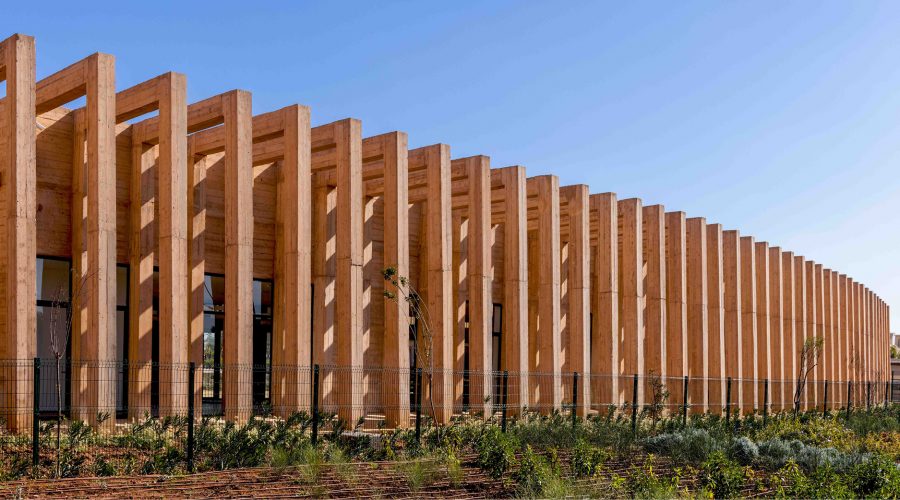
AA: What happens once you’ve got client, use, and content sorted out?
LC: Then you can begin the architectural project. And everything you’ve done up front kind of disappears, because you’ve created almost a normal situation. We often then pull back and go back to being simply architects—though wecreated the brief from scratch, we avoid a situation where we’re both client and architect. Another thing that’s very important is what will happen after, how the building will be appropriated by its users, which we think about while we’re designing and building. So we always like to say that we start much earlier and finish much later.
AA: What you’ve been describing is an anti-Swiss approach! Architects working in Switzerland have told me how everything is always worked out in huge detail before they get anywhere near the scene.
LC: In many ways yes! [laughs] This of course brings us to the question of what is the scope of architecture. There are places, like Switzerland, France, and many other European countries where an architect’s scope is extraordinarily narrow. You arrive and the site, the budget, the program, and the governance have already been decided. You’re given an urban possibility in which you have to make the nicest-looking building possible within a huge amount of predetermined parameters. We like to start our projects a lot earlier than this.
AA: And could you make that happen within, for example, a French or a Swiss context?
TO: Obviously it’s much more difficult than in some other places, but it’s starting to become possible. The overdetermination came at a moment where the authorities were almighty and powerful. Now, the perimeter of what the authorities do gets reduced, and they are reopening certain sets of freedoms that they didn’t use to.
Competitions like Réinventer Paris are an extraordinarily good example of this. They say, “We’ve got sites, we don’t really know what to do with them, why don’t you guys get together and come up with something?” This is what we’ve already been doing for 20-odd years. Coming up with something, that means not just programme, and building, and use, but also thinking about governance, the institutions that are going to ensure it works, how it’s going to transform over time. Architecture to us is a series of links in the chain of a long cultural project; it’s not an end in and of itself.
AA: I think this brings us to another of your keywords: “transgression.” You’ve already described how you transgress with respect to the conventional relationship between architects and programme. What else does the term mean to you?
LC: Almost everything an architect does is within the private realm, private property. Where we transgress is that within the private we carve out space for a public commons. We generally do it by thickening the thresholds—the limit is no longer at the property line.
AA: How do you persuade clients to accept such incursions into their territory?
TO: Often they see it as an added bonus, because you bring in new energy to these places or create a relationship with the community that the client didn’t know how to formulate. For example, in Morocco we’re doing a sports centre for the Office Chérifien des Phosphates in Ben Guerir, a big company town.
Only people who work for this company are allowed in. So we said to them, “You have a huge piece of land, which allows us to move the entire building fifty meters inside the boundary. Instead of making a straight façade, we’ll make a huge 350 meters curve. That way we thicken the limit, and within this limit there is a space of communication, of percolation, of mixing with the community.” This notion of transgression is extremely important to us. At one end you have the absolutely public—streets and squares regulated by the state—and at the other the completely private: your bedroom or your bathroom. And then there’s the entire space of community in between.
In many places that space is a grey area negotiated between the public the private and the intimate. In our view, it’s in those spaces that beauty happens. Consequently, we not only invite them in but make them the engine of the project to a certain extent. For example, the Moroccan Cultural Center we’ve just completed in Paris, a building occupying a 10-meter-wide and 30-meter-deep plot, with streets at either end. Within this tiny space, we created a publicly accessible passage, a shortcut to the Jardin du Luxembourg.
By creating something the programme didn’t need, we’ve brought in a whole different group of people who would otherwise never come. These common spaces are a form of negotiation: when they’re open, when they’re closed, under what conditions. And they bleed into both the private and public realm, and that’s what we find fascinating. At a time where the authorities’ capacity to make public space or to manage it is shrinking, these common spaces are all we have left.
There’s something very Mediterranean about them, spaces that are ambiguous and hybrid, where non-planned and non-programmed things can happen—places of marginality and heterotopia, for lovers and thieves. I like the idea that we contribute to making such spaces, and we do it in the most unlikely of places. In fact we do it in every single one of our buildings. It’s like those little Hitchcock cameos in all of his movies—you can look out for that space in each of our projects. It’s a thread that runs through all our work: provoking an engagement between the public, the common, the private and the intimate.
Discover more about Oualalou+Choi by reading the AA special issue No 46 – Acclimatization.


